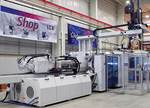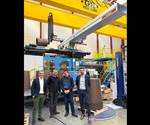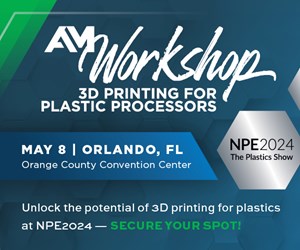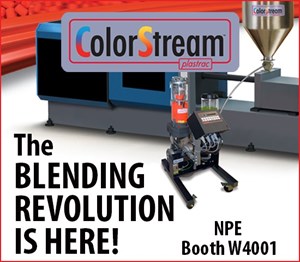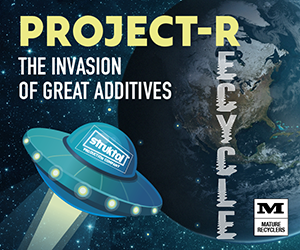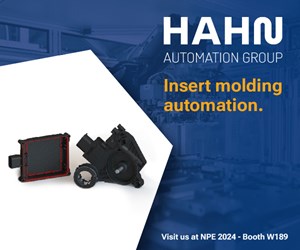Automation: New A-C Servo Axis Reduces Weight, Boosts Robot’s Payload
A newly developed direct drive from Wittmann Battenfeld and a re-design of the supporting structure has lightened the unit by 40% over its predecessor.
During a virtual introduction of products it would have launched at the Fakuma show, Wittmann Battenfeld introduced a new version of its A-C servo axis. Positioned at the end of the robot arm, the A-, B- and C-axes provide a “wrist” for cartesian style robots to maneuver the end-of-arm-tool (EOAT).
In the press conference, Wittmann Battenfeld Managing Director Michael Wittmann said the total weight of the new unit is 40% less compared to the previous version, with an average of 6 kg more payload handling available. This was achieved through the use of direct drives to power the wrist’s movements. Available for robots from the Wx142 to Wx153 and comparable units from the W8 pro series, the new A-C Servo Axis can be retrofitted to existing Wittmann Battenfeld robots and will be available for delivery in the fourth quarter of 2020.

The new A-C servo axis from Wittmann Battenfeld has reduced its own weight to boost the overall payload of the robot arm.
From the outside, the company says hardly any changes are visible, as its dimensions of 250 by 248 by 179 mm have been kept virtually unaltered. The newly developed direct drive and a redesign of the supporting structure, has reduced its overall weight and boosted the payload for the complete robot, but the drive performance for the A rotation (0–270°) and the C rotation (0–180°) remains unchanged, according to Wittmann.
Thanks to the decentralized drive control system from Wittmann, where the drive controllers are installed close to the motors, molders will be able to upgrade robots in the field with the new wrist without “elaborate” new wiring, according to the company. The R8 robot control system is able to control up to 12 servo axes—both linear and rotatory—with a cycle time of 4 ms and without an additional software package.
Related Content
-
Five Ways to Increase Productivity for Injection Molders
Faster setups, automation tools and proper training and support can go a long way.
-
An Automation 'First' for Non-Servo-Eject Trim Presses
Compact, flexible and configurable robotic system is said to be the first to enable thermoformers to fully automate product handling after a non-servo trim press.
-
A Cost Saving Modular Approach to Resin Drying Automation
Whether implementing a moisture-sensing closed-loop system for a single dryer, or automating an entire plant, technology is available to take the guesswork and worry out of resin drying. Using a modular approach allows processors to start simple and build more capabilities over time.


